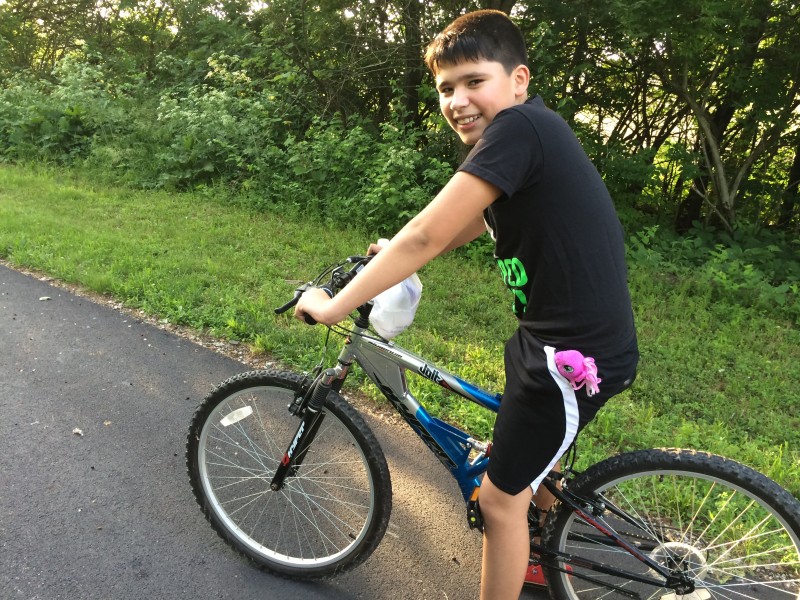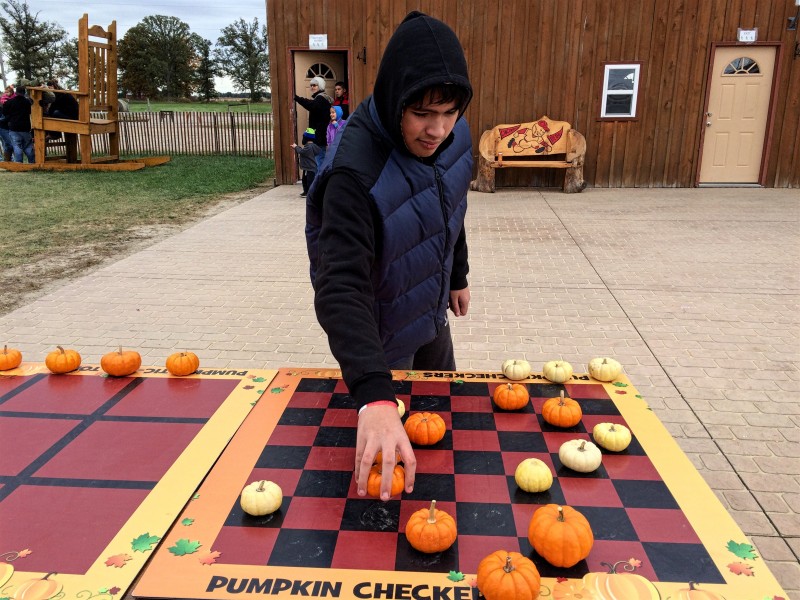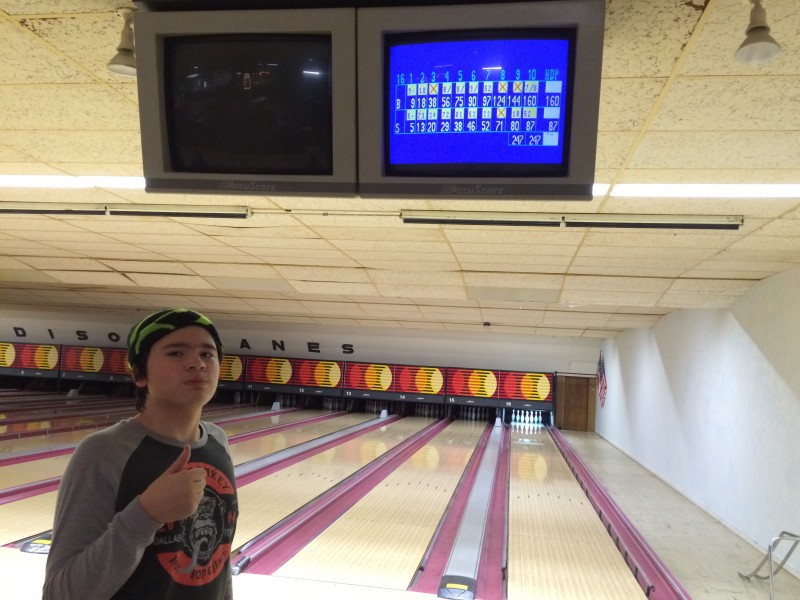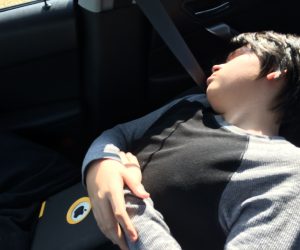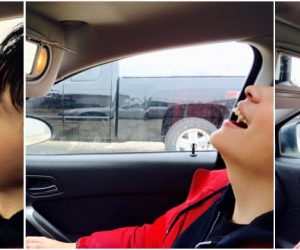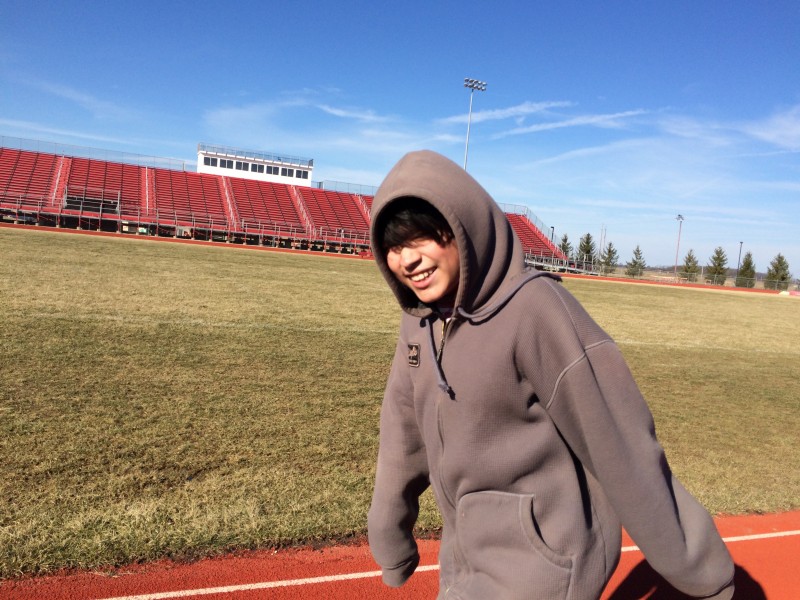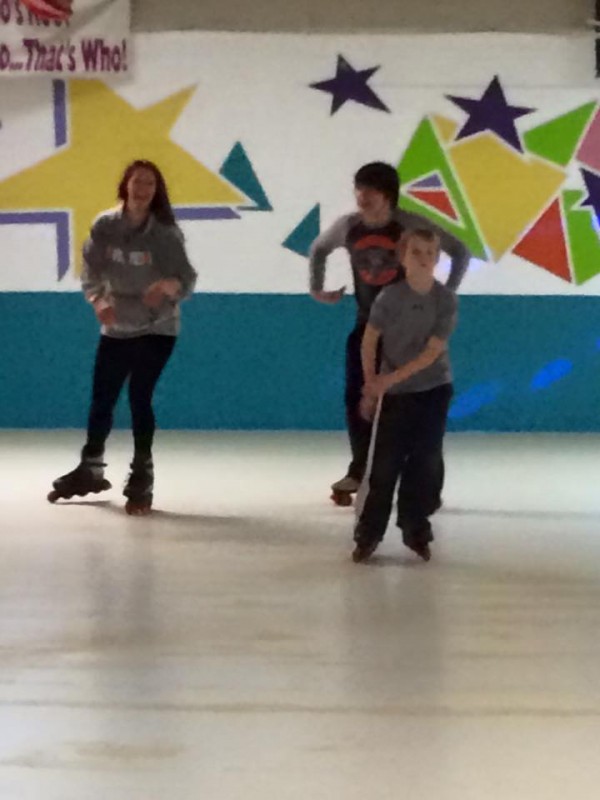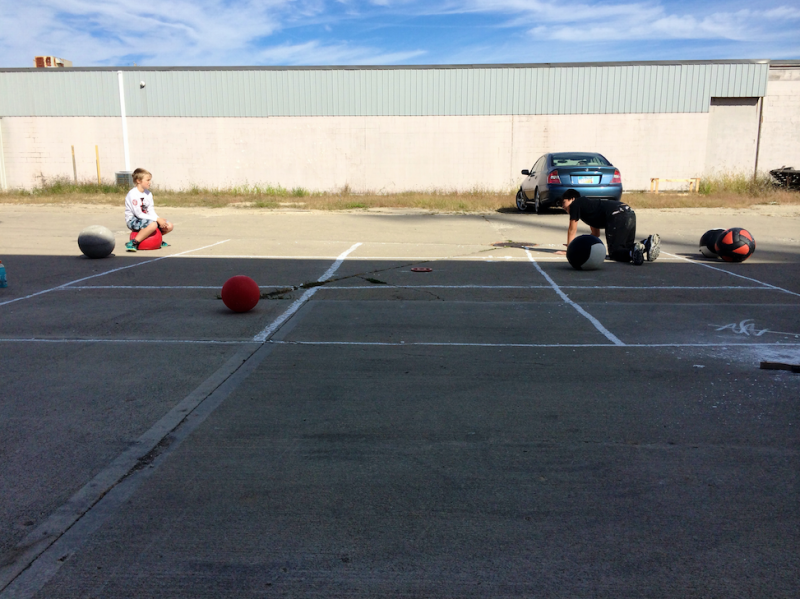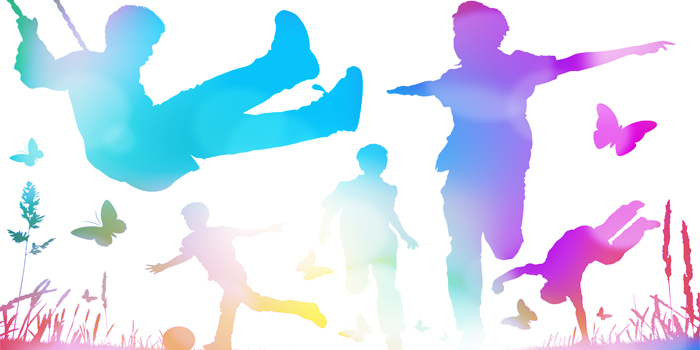
Through witnessing a countless number of programs designed and implemented by individuals interested in creating positive change for children and young adults on the autism spectrum, I’ve seen remarkable advancements in social skills through an active, hands-on/experience-based approach.
This eight-article series provides ideas to advance an inactive, socially craving child/young adult into a physically and socially strong individual through movement and strength. We begin at the gym and through progressive types of training travel off-site, shifting from one-to-one training to playdates with friends (one example, mind you).
If you haven’t already, please read Social Skill Integration Through Movement and Strength — Gym Training, and Social Skill Integration Through Movement and Strength — ½ Gym Training, ½ Off-site Training, as this article will have greater effect.
First in this series, we explore gym training — our home base, the place we find our greatest comfort and lay down the groundwork for the trainer and child to connect. Second in this series, we split our training day into two halves: gym and off-site to extend concepts to their appropriate settings.
RELATED: Social Skill Integration Through Movement and Strength — Gym Training
In transition, we’ve trained alongside other gym members and invited new interactions to occur. We’ve expanded our associations with training and incorporated new places to work out within the gym area to communicate how training can be performed in multiple locations with a variety of equipment and people. Incorporating the ½ Gym, ½ Off-site training type, we’ve left the gym to extend our learning, added traveling time to our agenda and interacted with new people in diverse environments. Moving off-site (in close proximity to the gym) was a great opportunity to interact with new people similar in age and development, initiate/respond to engagement, practice appropriate conversation, and model team-building skills when/if appropriate: setting/following rules, taking turns, dealing with winning and losing, demonstrating leadership skills, accepting criticism, and maintaining a positive attitude.
Now it’s time to move our efforts elsewhere. We’re ready to leave the comforts of the gym and move off-site.
Off-Site Training
What, Where
This type of training takes place at an off-site location. It’s a weekly or monthly commitment to complete movement and social based objectives outside of the gym. The location spots can vary in distance but I wouldn’t recommend driving beyond 60 minutes in one direction. Choose locations that are movement-based that will refine previous lessons, social and physical, and immerse the child in a new experience. Off-site locations that I recommend, where there is plenty to accomplish in 45-60 minutes of training time, include: biking trails, playgrounds, trampoline parks, the zoo, a bowling alley, a public pool, the roller rink, a corn maize farm, a track and field, and indoor or outdoor putt-putt.
Why
Now we have an opportunity to locate an off-site location and use its features to our advantage to meet our training goals for the day. Depending on the training goals, there are many different reasons why this type of training can be beneficial to make progress. Here are a few that may be of help to you:
Skill Differentiation. Up to this point the child is culminating a vast amount of skills and showing proficiency in each of them. Consider how the off-site location will meaningfully call upon parts of a developing skill (shift practice to play), use parts of skill to create a new end product, and/or give the child options to approach and perform the skill in a slightly different way.
Positive Exposure. In most cases, the off-site location will naturally surround the child with other individuals looking to have fun while moving. This gives the activity and the act of moving great positive exposure and plenty of opportunity to engage and reciprocate these emotions/associations.
Social Skill Extension. Most locations you’ll find tend to be game-like, so this is a great opportunity to further extend team-building skills: effective speaking, active listening, turn taking, winning, losing, mediation skills, partnership, assertiveness, giving and receiving feedback, maintaining a positive attitude, knowing when to take a break, improving communication, decision making, and problem solving.
Commute. Nothing else can fully replicate the act of sitting in a car while maneuvering through space and although I can’t explain it, you’ll be surprised how this commute may provoke an opportunity to learn more about each other and share stories, memories, fears, and anticipations — all topics that would otherwise never come to surface within your training day.
Social Integration
At this point in training, choosing to use off-site training as a go-to, you should start seeing an energy shift take place. Therefore, less energy will be spent in hitting the basics: comfort in leaving the gym, new schedule outline, the car ride, appropriate appearance, and off-site etiquette. Energy is now dispersed to other areas that require higher level of physical and social engagement.
Gauge how the physical demands will influence the social capabilities of the child. Comfort in the off-site basics while confronted with a physical challenge perceived by the child as doable and pleasurable is opportunistic to social skill extension. Comfort in the off-site basics while confronted with a physical challenge perceived by the child as hard and grueling may blunt social skill extension.
To illustrate, let’s take a look at an 8-week example of how this energy shift can take place using the three types of training previously outlined. Watch as our physical efforts are initially minimized when our environment changes. Notice how the track requires us to use and build upon our gym skills while simultaneously inviting interaction.
Weeks 1-4 in the gym setting we’re climbing stairs as part of our repertoire. Weekly, we progress our efforts by adding stairs, changing our speed, skip stairs, run stairs, and climb with a weighted vest. It’s a trainer and child exercise and we commonly have to share the stairwell with gym patrons and exercise verbal and non-verbal communication, self-awareness, positive attitude, turn taking, and giving a gym member the right of way.
Weeks 5-6 we leave the gym for half the session and go to the high school track and field. We progress our climbing efforts at the track bleachers ‑there’s more stairs to climb, multiple sets of stairs are side by side, and the space between each step is elongated. These two weeks are spent getting accustomed to leaving the gym and setting foot on a new location with new people. Our workload is lessened (less stairs and a slower pace) as we maintain our social courtesies.
Week 7-8 we’re at the track and field for the entire session. Week 7 we’re climbing the entire length of the bleachers as we maintain social courtesies to track patrons. Week 8 we line up to the bleachers and race to the top as a pair and then are joined by people who are interested in racing too. Here is where the extension is likely to take place.
Hypothetically speaking, as a group we’ll work together to make sure fair rules are designated and we problem solve through conflict- mediation over a false start, winning (graciously), losing (graciously), etc. It’s possible your client takes initiative within this setting and mix of personalities. It’s possible that another member of the group takes initiative and the client follows his lead in partnership. Do remember: as it’s tough to fathom what will actually take place off-site, remain flexible and be sure not to step outside of the boundary and miss out on peer-to-peer interaction. Do guide when necessary.
Planning Behind the Schedule
Similar to ½ Gym, ½ Off-site, the training day can be organized into four parts: the greeting and meeting at the gym, the car ride (or transitive means to get from one location to the other), the off-site portion, and the closure and feedback meeting at the gym. Use these tips to guide your off-site planning:
Gym
You’re probably thinking, “Why are we at the gym if this is supposed to be off-site?” Good question! Although this type of training is quote-unquote off-site, I highly recommend beginning and ending the session at the gym. In this case, you’ll have a great opportunity to gauge the child's readiness before venturing onto out-of-the-ordinary territory. You’ll be able to review the schedule in a familiar place and receive parental feedback. This routine continues to signal the comfort we find in the gym and as a pair. As you know, some training days should not take place.
Drive to and from Off-Site Destination
The car ride to and from the off-site location is an idle period of time that may be spent in silence or jam-packed with conversation. Leave this up to the child.
It’s likely your driving time will increase. If appropriate, segment this time to accomplish a variety of tasks: review the schedule, eat a small snack, play a video game, read, talk, nap, and/or help navigate. Another option is that silence and rest fill this chunk of time. It may also be a culmination of the two extremes and in one direction the commute is structured and in the other it’s laid back and unfolds naturally.
In any case, do realize this time is bridging the child between the gym and off-site and then off-site back to the gym. What transpires here will have direct impact on what is accomplished off-site and the child’s returning mind state when reunited with his parents.
Off-Site
Wherever you decide to go, make sure to have a firm grasp of the location: its layout, rules, and operations. This requires you to visit the location, walk the grounds, visit the website (if applicable) and do further research before penciling it in for your next off-site adventure. Some questions worth answering: What are the operating hours? Does participation require a waiver signed by the parents? What’s the fee? How much space do you have to work with? Are there any time constraints? Is there any staff support? Are any accommodations provided if needed? Are there any areas you need to neglect? If so, how do you plan on doing this? Through your investigative work, you’ll then be able to use these answers as structures to set up the schedule. Your programming fits within these structures.
Below are a few articles worth checking out that will take you to a variety of off-site locations. Each one contains the rationale behind the chosen location, the planning behind the schedule, the social integration aspect, a schedule, and training day results:
Schedule
The schedule is a rough sketch to provide order. I mention that it’s a rough sketch because you should use it as a flexible plan — it’s what you’d like to accomplish in a perfect world but you’re fully in acceptance of change and disorder. You’re not listing all the social skill opportunities unless not listing them would result in adverse behavior (small cues are acceptable). What is listed (the order, the amount of rest, the types of exercises/activities, the overall time frame, expected wait time, form of transportation, parties involved, game rules, free time, etc.,) is individualized for the child in hopes of accomplishing whatever it is you’re looking to accomplish, short and long-term.
To give you something tangible to work with, here is an example of a 90-minute schedule for Off-Site Training at the roller rink. Obviously your plan will look much different depending upon the needs of the child and the resources available, but it will at least give you pace, ideas of how to organize a plan, and maximize space. Notes to follow.
90-minute Schedule Outline
5 minutes: Welcome at Gym /Brief with Parents
- Meet and Greet
- Review Schedule
20 minutes: Drive to Roller Rink
- Talk
- Play video game
- Listen to music
- Review schedule
40 minutes: Skate at Roller Rink
- 5 minutes: Arrive, wait our turn to pay (be patient), wait our turn to get fitted for skates, find locker and place belongings within. I’ll hold onto locker key!
- 5 minutes: Warm Up in Private Rink: Practice the following: stopping, falling, and play Skate, Press, and Listen
- 5 minutes: Open Rink: Follow the leader, take turns
- 5 minutes: Rest/Snack and drink from concession stand
- 5 minutes: Open Rink: Group Hokey Pokey and Limbo
- 5 minutes: Open Rink: Relay Race
- 5 minutes: Open Rink: Free Choice
- 5 minutes: Return skates, retrieve our belongings from locker
20 minutes: Drive to Gym
- Take a nap
5 minutes: Arrive at Gym /Brief with Parents
Notes
This off-site training day takes place at the roller rink. The purpose of this training day is to go the roller rink, maximize interaction with those in attendance, familiarize ourselves with the skating process (different locations within and the how-to of acquiring skates, paying, etc.), and exercise a variety of skating skills while having fun. Overall and most importantly, we want this experience so good that it joins our pile of reoccurring off-site go-tos.
Getting started at the gym, use the meet and greet with the parents and child to gauge where the child is that day. The drive is segmented into four sections as this gives you one way to split up time. You may talk 20 minutes, the child may play video games for 20 minutes. In any case, allow the child to choose how this time is spent.
Notice once we arrive at the roller rink that the first five minutes spells out all the formalities we must go through in order to start skating. I added a cue to be patient because waiting in line once we walk through the door is where patience usually runs short.
We begin our skating time in the private practice rink. This room is usually quieter than the main floor (the DJ and music speakers are on the main floor) and occupied by only a few (everyone else is on the main floor). Here, we have five minutes to get acclimated to our skates, the oily floor, and survival skills: skating, our pace, stopping, falling, and turning. The “Skate, Press, and Listen” is a great warm-up drill that encompasses skating for distance, moderating our speed (slowing down as we approach a wall or person) and using our listening skills for a direction change. Take turns, skate in one direction, slow down when approaching the wall and listen for directions (left or right) as you approach the wall.
Transitioning to the main floor, play Follow the Leader. One player (the leader) navigates through the rink while the other (follower) mimics her movement, route, and behavior. I suggest the trainer be the leader first, as this will nicely demonstrate appropriate spacing between self and others, skating direction, and a variety of ways to maximize the rink space.
Take five minutes to skate to the concession stand to buy a mini snack and drink. Allow the child to place his order. If you have to wait for food, sit down, rest, eat and drink. This is a good chance to talk with the child (about anything he wants to talk about) and gauge interest, comfort, and energy levels.
RELATED: Social Skill Integration Through Movement and Strength — ½ Gym, ½ Off-Site Training
Hokey Pokey and Limbo (corny, yes) are excellent opportunities to move in a group effort. These games require the child to be attentive, mimic and perform new movements, listen to directions and music, and practice turn taking. Unlike Hokey Pokey, Limbo requires strategy and contortion while performing individually. What I love the most about these games is the spotlight it places on a room full of people all looking to have fun while moving. Just like the car ride, these moments are hard to replicate.
The relay race can be played with two or more players. It’s possible that up till this point the child has connected with another. If so, invite the friend to play, set rules, and play.
Free Choice grants the child expression to do as he pleases for five minutes. The possibilities are endless! The child may want to play arcade games, get another snack, have another relay race, play a new game, exchange contact info with a new friend, and/or rest. Again, the choice is there’s.
The remaining five minutes at the rink are left returning our skates and retrieving our belongings from the locker. Say goodbye to any new friends!
The trip home lets the child nap. Obviously this may be the last thing your child would ever want/need to do. If so, do something else. Perhaps the child would like to talk, play video games, sit in silence, or help navigate home.
Assume the child will not share what took place within the session with her parents. This is why parental feedback is so important. Be sure to bridge the gap between the child and the parent and provide feedback to verbalize what was accomplished in the session. As minuscule as the progress might seem, it’s still progress and should be celebrated amongst everyone involved (especially the child).
Transition
In the previous three training types, social interaction and engagement continues to mature. Grounded in gym etiquette, a large part of our overall off-site experience hinges on our ability to connect with those surrounding us. In transition, we’re ready for the next type of training: ½ One-to-One, ½ Training Partner. This type of training takes us back to the gym setting. It’s a weekly commitment for the child to complete movement-based objectives inside the gym, one-to-one (child and trainer) and then with a training partner (two children and trainer).
Thanks for reading. Please use the comments section below to ask any questions. I’d love to help any way I can.









